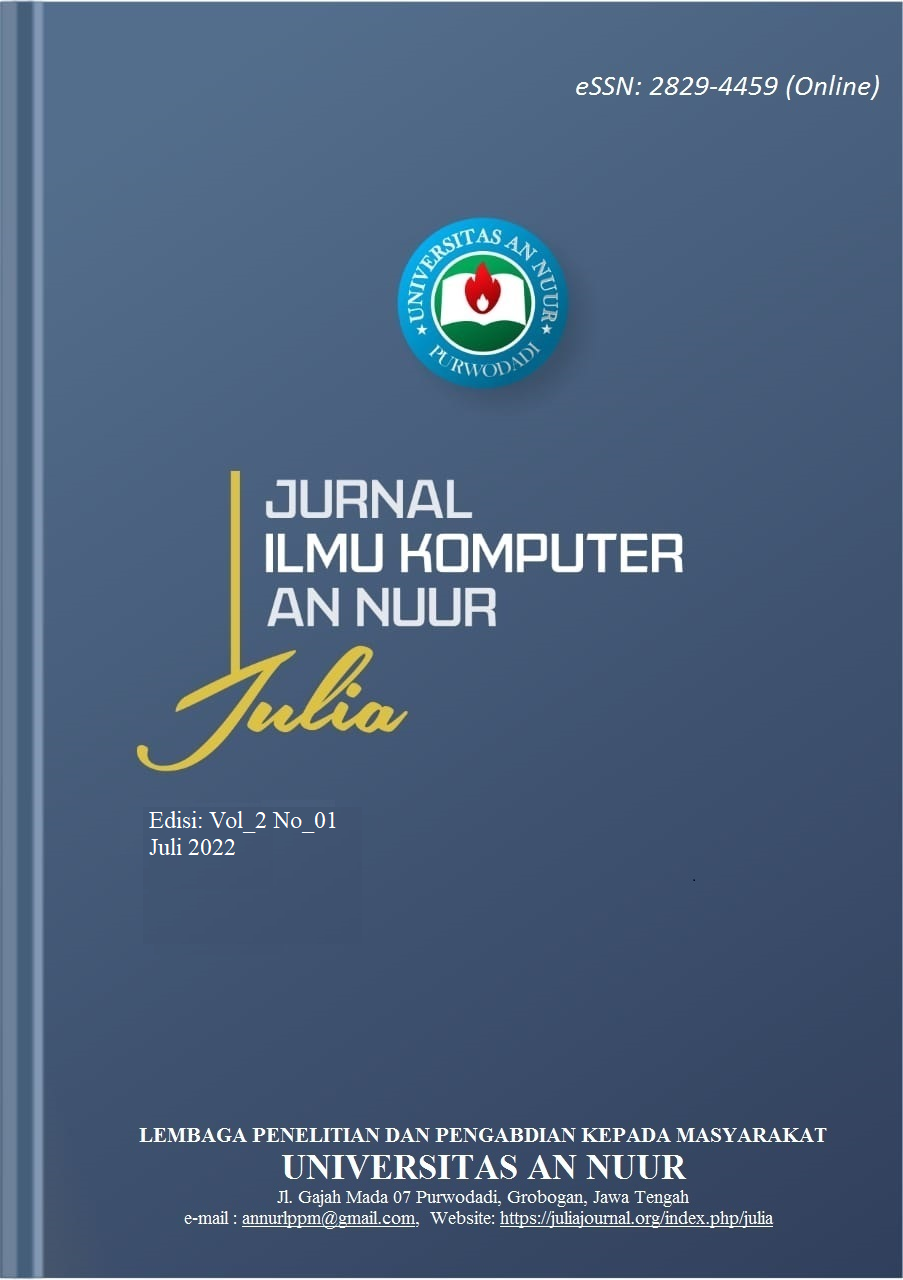OPTIMIZATION OF PARTICLE SWARM OPTIMIZATION IN NAÏVE BAYES FOR CAESAREAN BIRTH PREDICTION
DOI:
https://doi.org/10.35720/julia.v2i01.17Keywords:
Caesarean Birth, Prediction, Naïve Bayes, Particle Swarm OptimizationAbstract
The Maternal Mortality Rate (MMR) in 2017 according to the World Health Organization
(WHO) is estimated to reach 296,000 women who die during and after pregnancy or
childbirth. Caesarean birth is the last alternative in labor if the mother cannot give birth
normally due to certain indications with a high risk, both for the mother and the baby. factors
of a mother giving birth by caesarean section, such as placenta previa, hypertension, breech
baby, fetal distress, narrow hips, and can also experience bleeding in the mother before the
delivery stage. It is hoped that delivery by caesarean method can minimize problems for the
baby and mother. Accurate prediction of the condition of the mother's pregnancy can enable
d
octors, health care providers and mothers to make more informed decisions regarding the
management of childbirth. To predict caesarean births, data mining techniques using the
Naive Bayes algorithm can be used. Naive Bayes is very simple and efficient but very sensitive
to features, therefore the selection of appropriate features is very necessary because
irrelevant features can reduce the level of accuracy. Naive Bayes will work more effectively
when combined with several attribute selection procedures such as Particle Swarm
Optimization. In this study, the researcher proposes a Particle Swarm Optimization
algorithm for attribute weighting in Naive Bayes so as to increase the accuracy of Caesarean
birth prediction results








